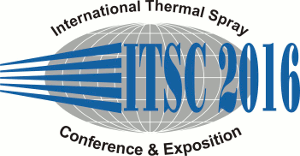
|
4732 |
|
Plasma sprayed coatings for bone replacement with anti-microbial properties |
|
Holger Testrich* / INP Greifswald e.V. - FROM IDEA TO PROTOTYPE
, Germany Antje Quade/ Leibniz Institute for Plasma Science and Technology , Germany Angela Kruth/ Leibniz Institute for Plasma Science and Technology , Germany Uta Schnabel/ Leibniz Institute for Plasma Science and Technology , Germany Katja Fricke/ Leibniz Institute for Plasma Science and Technology , Germany Maik Fröhlich/ Leibniz Institute for Plasma Science and Technology , Germany Klaus-Dieter Weltmann/ Leibniz Institute for Plasma Science and Technology , Germany Martin Polak/ Leibniz Institute for Plasma Science and Technology , Germany |
|
Plasmaspraying is used since many years to create special surfaces for biomedical applications. Plasmaspraying offers lots of unique process and coating properties like a high deposition rate, high surface roughness and the ability to create ceramic or metal oxide coatings which makes this technique very versatile for the surface enhancement e.g. of implants. A main challenge for implants are infections especially if they are caused by antibiotic resistant germs. Along with a drastic impairment of the quality of life for the patients they involve high costs of 20-30 thousand euro per patient. To solve this problem the cell growth of human bone cells should be promoted to achieve a fast ingrowing of the implant and the proliferation of microorganisms on the implant surface and in the surrounding tissue should be suppressed. By the use of plasma spraying it is possible to coat implants with special ceramics and/or metal oxides and a defined admixture of anti-microbial agents or metals, which are subsequent released from the implant surface. In dependence on the layer composition and arrangement the development of coating systems with an anti-microbial effect over weeks and months is achievable. The approach is to coat the implant surface with a cell adhesive bone-like material to archive strong bone-to-implant contact in which an anti-microbial agent is incorporated. The presentation deals with the coating system and process development, surface analysis with AFM, REM, XRD and XPS as well as microorganism and cell proliferation assays. |